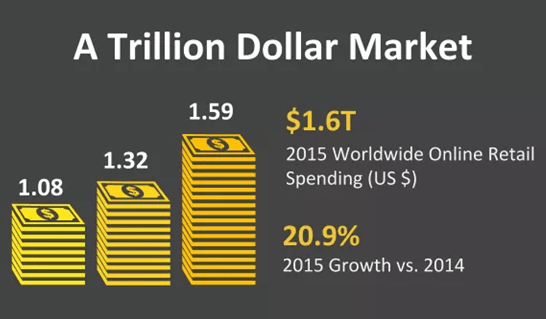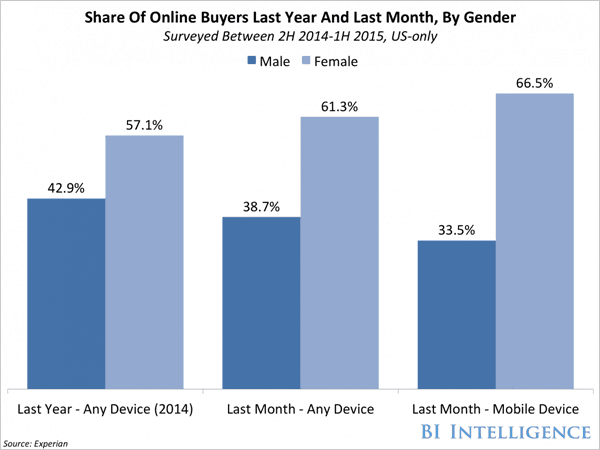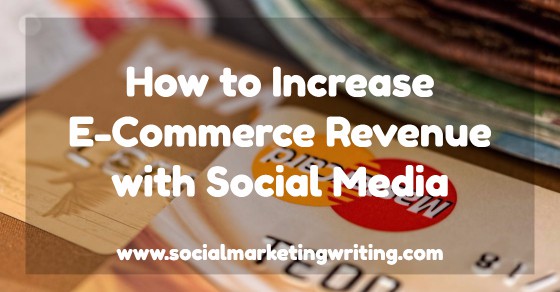Gone are the days when e-commerce stores were a novelty; nowadays the internet is awash with e-commerce stores that provide consumers with exactly what they want, and when they want it. It is a trillion-dollar industry with more than 12 million stores.

As there are builders like Shopify that make it easy to set up an ecommerce store from scratch.
So how do you make your business stand out from the crowd?
You could reasonably expect that to increase your revenue you need to offer your products at rock bottom prices that wipe the floor with your competition.
However, this is an unnecessarily risky approach that would only be successful if you were able to vastly increase the numbers of units that you sell; a strategy that would not only devalue your product, but your brand’s reputation too.
Your brand is the key to your success, and what better way to promote it than through social media. You know that we like to keep up with the Smiths and Joneses, it’s human nature; and so you must harness this to your advantage; but before you even attempt to kickstart your profits with a social media campaign, you must ensure that your website is 100% primed for success.
You need to ensure that it is optimized for a superlative user experience: fast load times, easy to navigate, real-time inventory and a fluid checkout experience. Do not underestimate the need for website testing. Companies such as BugFinders specialize in e-commerce store website testing, and will ensure that your site is able to meet your and the consumers’ expectations.
You will also need to understand that using social media to grow your business requires dedication and a strategy; it is more than just posting daily blog posts or statuses that promote your product. You need to be ready for some hard work to achieve an increase in revenue, and realize that this is not about an overnight success story (although that can happen), but rather a way to ensure your business’s longevity and continual growth.
Here are the 3 W’s for increasing your revenue by utilizing social media platforms.
Who
You will already have an idea of who your customers are, but you must deepen your understanding of them. You need to create a customer profile to help you define the demographic of the customers you are trying to reach. Not only will you be able to use this information to grow your business in terms of expanding your product range to suit their requirements, but you will be able to target them on the most suitable social media platform that their demographic uses. Marketing your brand on LinkedIn would not be as effective as an Instagram campaign if your target audience are Millennials or Facebook for stay at home mothers.
How do you get this information?
You will already have access to a lot of the data that you require. Look at your ecommerce store’s order history: name, address, shopping history. Your website is the ideal medium to obtain further information, so amend the account registration forms to request further information. Find out their hobbies, their likes, how many people live in their home, total home income, etc.
When visitors sign up for newsletters you can also get this information. Harvesting more information will give you a greater ability to segment the data to categorize your customers.
To effectively collect and measure this data it is recommended to use a customer data platform. It builds a complete picture of your customers on an individual level by collecting 1st party customer data (transactional, behavioral, demographic, etc.) from a multitude of sources and systems, and links that information to the customer that created it.

Research demographic-related reports like this one from Business Insider that will help you understand your customers – there’s a vast amount of information on the internet, you just need to look for it.
What
Now you know who you are targeting, you can develop a content strategy to bring them to your website. You will have heard the phrase ‘content is king’, but it really is. There is no such thing as effective social media marketing without content, and by doing it successfully, you are using the most powerful tool to build trust and authority to your business. Your website’s content needs to appeal to your target audience, and always support your brand. You need to ensure that your content is:
- Brand affirming
Everything that you put your business’s name to must correlate with your brand. Your brand needs to be strengthened by your posts. It is no good posting anything that may isolate your audience from your brand. For example, certain demographics will not get the humor behind internet memes. They may be the post of the day and get shared mercilessly across the ether and social media platforms, but if they are not relevant to your audience, do not post them.
Similarly, hashtags need to be appropriate to your brand. You may wish to piggyback on the success of a popular hashtag, but people will soon unfollow you if you are seen to be doing just that – everything you post should be relevant to your brand.
- Shareable
The great thing about social media is that we can share information at the touch of the button. Creating shareable content means that you can sit back and watch it work its magic. Aim for content that solves a problem or provides insight, but do not just have blocks of text, people like easily digestible information that takes them on a journey: clear headings, bullet points, images or even infographics that display your message concisely.
You will be able to measure how successful your posts are by the number of shares or likes you get – and this is a golden goose in terms of being able to then write content along similar successful lines.
Alongside content strategy, investing in Shopify’s custom theme development can significantly enhance the user experience on your e-commerce site, making it more visually appealing and aligned with your brand identity.
Where
As referred to earlier, the social media platforms you choose to use need to be demographic appropriate. This great infographic shows you the results of research by Tracx that demonstrates who uses which social media platform.
The benefit of using this information is that you can tailor your content to suit the different platforms. You do not want to use the same content across all platforms; you want your audience to engage with you across as many as possible, but if you repeat yourself, you will lose followers – why should they follow you on Facebook if they see the same information on Instagram?
You want your content to be as unique as your brand, and this way, you will be able to adjust your marketing slightly to target the different audiences – if your product or service crosses over the demographics. For example, you may sell pens, and appeal to both the older demographic and also student population.

An example of a company that shares quality content to promote their ecommerce store on social media is Nordstrom. Check out their Instagram page first and then go on and check out their Facebook and Twitter pages too. The content on each social media is different, but it resembles their brand.
Your social media campaign is reliant on your content strategy, and vice versa. It will demand much of your time and energy, but you will reap the rewards. The important thing to remember is to keep your content relevant to both your brand and your audience. Have fun with it, and inject some of your personality into your postings – people want to see the human side of a business, and if they like and engage with you, they will buy from you.
How do you increase ecommerce revenue with social media? Which techniques work best for you? Please leave your comments below.
About Steve Conway
Steve Conway is a content marketing professional and inbound marketing expert. Previously, Steve worked as a marketing manager for a tech software start-up. He is passionate about discovering new software that will that will advance his already well-honed digital marketing techniques.
